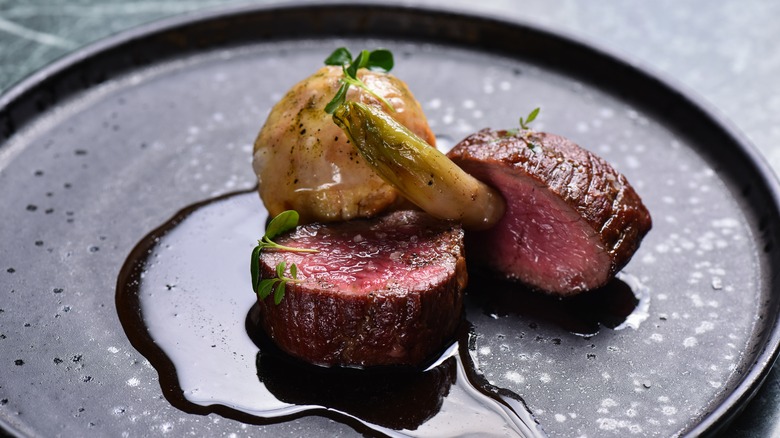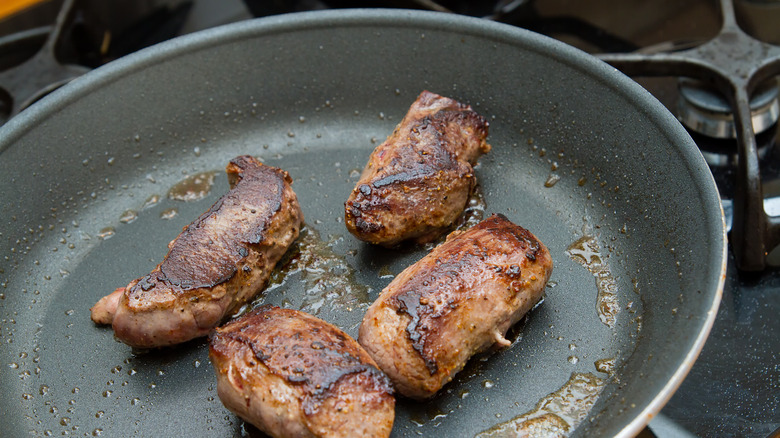The Step You Can't Skip With Sous Vide Venison
Cooking venison, a popular game meat known for its rich flavor and lean quality, presents a unique challenge in the kitchen. Unlike beef or chicken, venison requires careful handling to highlight its distinctive taste while ensuring it remains tender and juicy. One cooking method that has risen to the challenge is sous vide, a technique celebrated for its precision and consistency. However, even with the advantages of sous vide, there's a pivotal step that elevates venison from simple to extraordinary: the double sear. This technique involves pan-searing your steak both before and after the sous vide process, and it's crucial for bringing out the best in your venison.
Sous vide cooking has gained popularity for its ability to cook meat evenly and to exact temperatures, ensuring that whatever you are cooking comes out tender and juicy. However, what sous vide excels at in terms of precision, it lacks in providing that much-desired crust that only high-temperature searing can achieve. That's where the double sear comes into play, offering a perfect solution to this dilemma.
How to double-sear your sous vide venison
Starting with the pre-sous vide sear, this step is all about flavor. When you char the venison before bagging and submerging it in the water bath, you're doing more than just browning the meat. This initial sear creates a rich, caramelized crust, thanks to the Maillard reaction, which is a chemical process that occurs when proteins and sugars in the meat are exposed to high heat. This reaction is what enhances the steak's flavor.
After the venison has reached its desired internal temperature in the sous vide bath, it's time for the post-sous vide sear. This second sear is critical for reintroducing texture to the meat's surface. Even though the steak is already cooked to perfection on the inside, the outside lacks the appealing crunchy finish and color that only a quick, high-heat sear can provide. This final step crisps up the exterior, adding a delightful contrast to the tender, evenly cooked interior.
It's important to remember that both sears should be quick and hot. You're not cooking the meat further; you're adding texture and flavor. A cast-iron skillet or heavy pan is ideal for this, as it retains heat well and can be brought up to a high temperature. Use a bit of oil with a high smoke point and get the pan very hot before adding your venison steak. Each sear should only last a minute or two on each side, just enough to achieve that golden crust without overcooking the meat.

